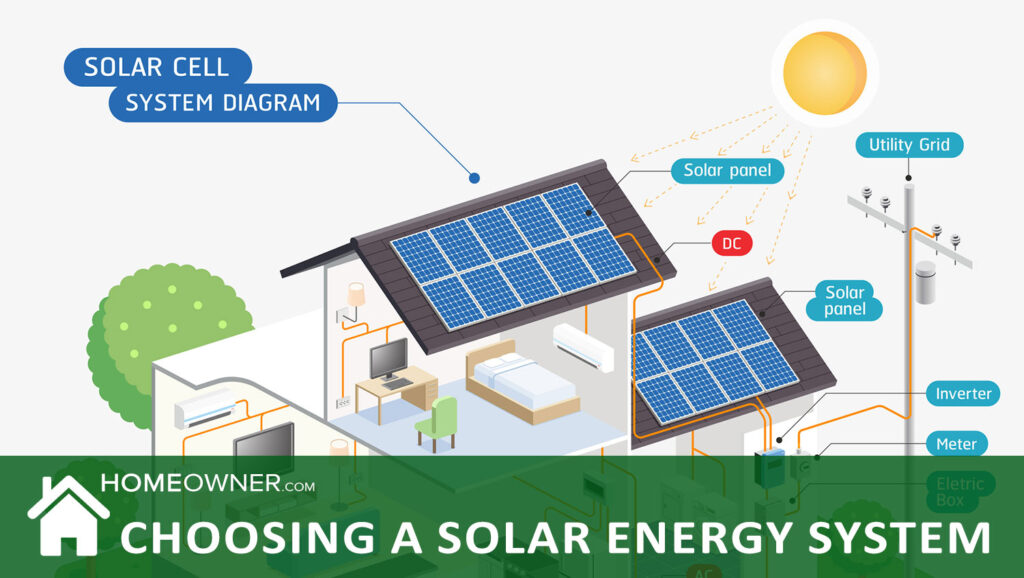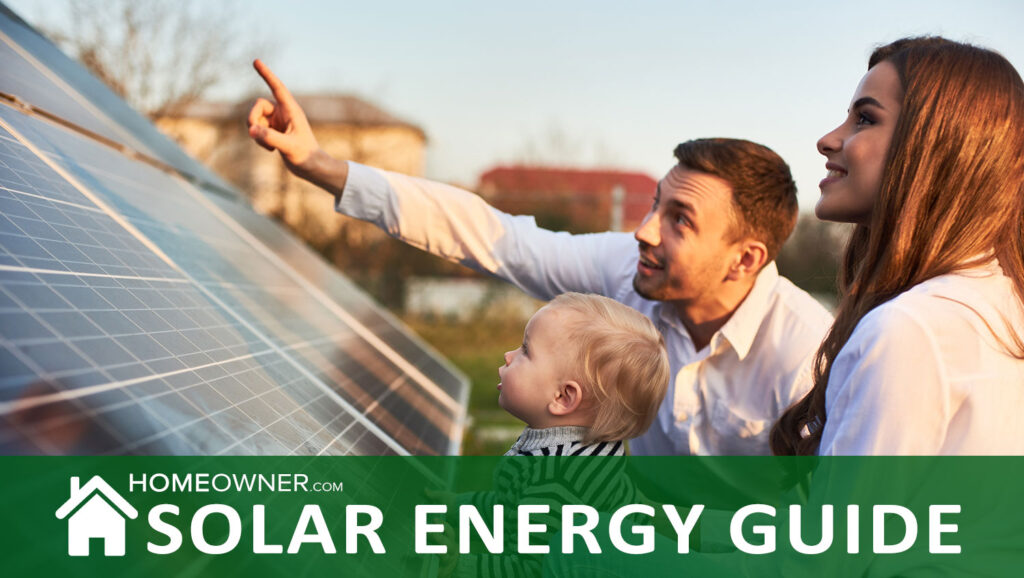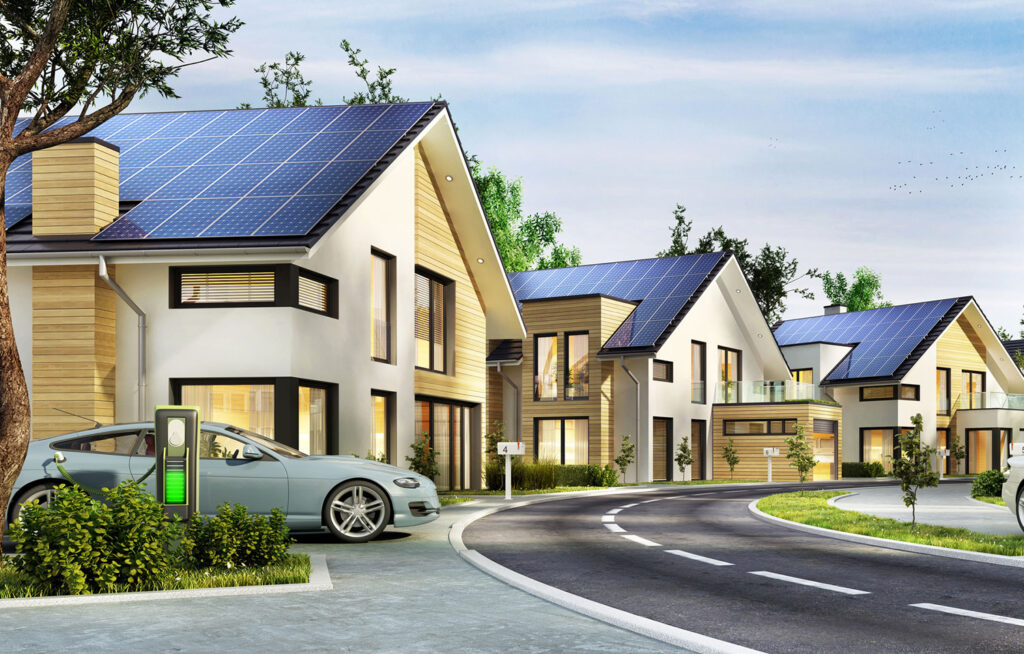Installing solar panels can make a positive impact on the environment while helping homeowners save money on their energy bill. Somewhere between 4% and 6% of homes in the United States have residential solar panels providing some or all of their energy, and the number increases slightly each year.
Still, solar panels aren’t quite commonplace yet, mostly because they can require a hefty investment up front, making them financially inaccessible to many. However, considering how much solar panels can potentially save homeowners in energy costs, budgeting for solar installation is something to think about.
Get A FREE Home Solar Quote Now
Pro Tip: Lower your monthly energy costs and explore the benefits of solar energy with Energy Bill Saver! Just enter your Zip code to check your eligibility for solar tax credits and bonus savings.
Solar Panels vs. Traditional Energy
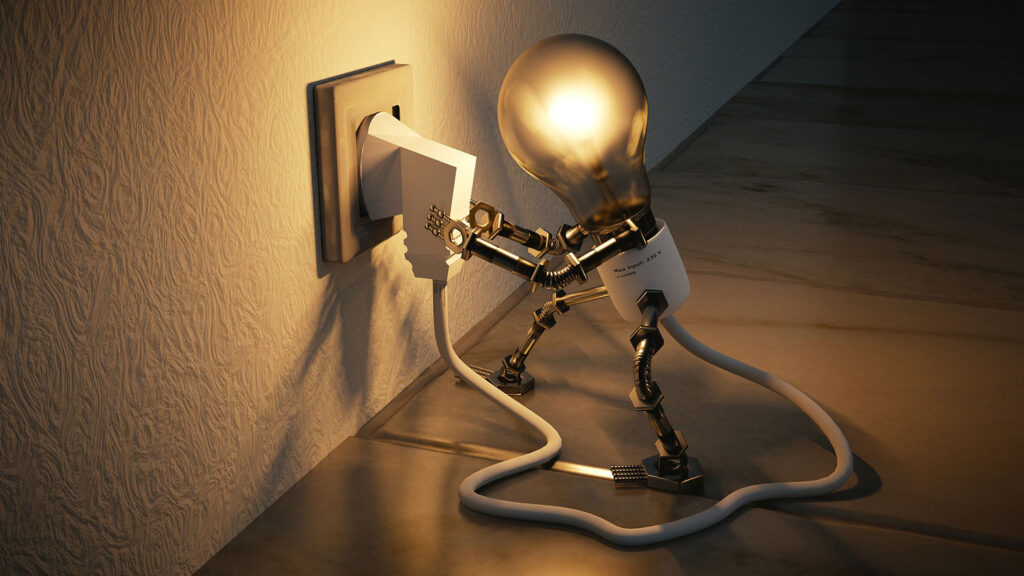
Whether you’re looking to lower your electric bill or considering solar energy as an eco-friendly way to power your home, solar power certainly has benefits for homeowners.
Compared to traditional energy sources, like gas and coal, solar power is clean and renewable. It draws energy from the sun through a solar panel, while the panel converts that energy into energy that can power a home. Because the sun is always there to produce solar energy, a solar energy system provides renewable energy.
Meanwhile, other types of energy rely on fossil fuels, which will eventually run out and require extraction methods that may harm the environment. Because solar energy doesn’t require drilling into the ground or other hazardous means to use it, it is considered a clean form of energy.
On the other hand, solar energy is not as reliable as traditional forms of energy, simply because the sun is brighter on some days than others and at certain times of the day than others. Homeowners may run out of solar energy if their area experiences a few days of cloudiness, for example.
How Much Do Solar Panels Save?
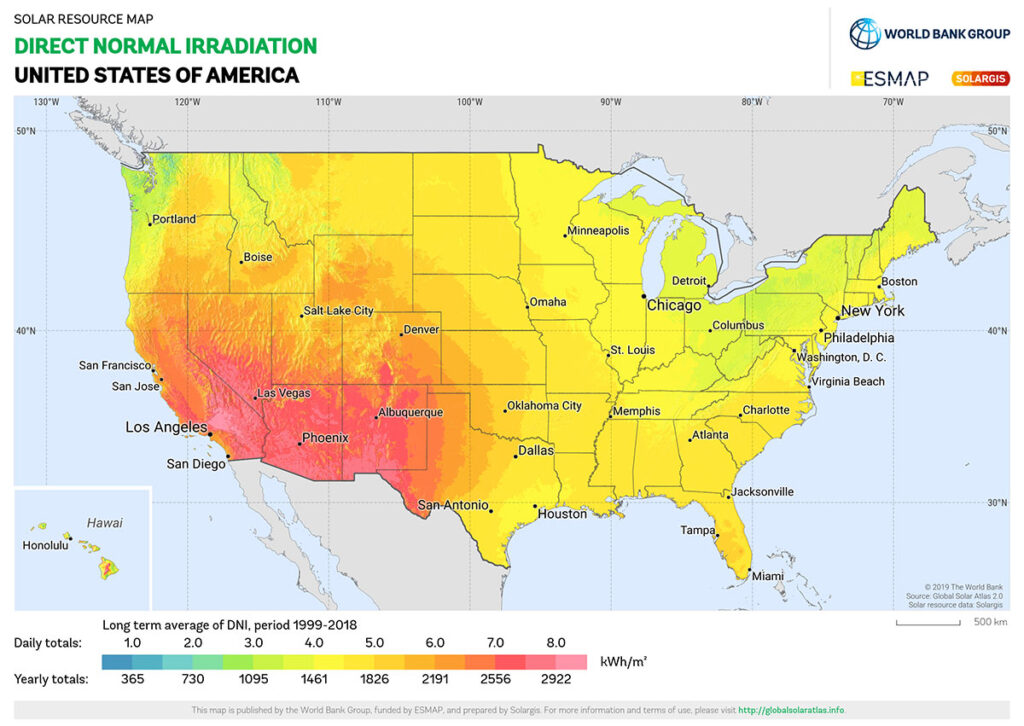
Before you invest in solar panels, it’s natural to ask yourself:
- How much do solar panels save you on electricity in general?
- How much do solar panels save you per month?
- How much do solar panels save you per year?
The answer, of course, can vary based on the size of your installation, your typical electric cost, and the electricity rate for the area where you live.
However, the average homeowner can save roughly $1,785 per year – nearly $150 a month – by switching to solar electricity.
This number is based on the average price of electricity per kWh in the United States, which is roughly $0.17, and the average household’s electricity usage per year of about 10,500 kWh. Based on this information, the average household spends $1,785 per year on electricity, which they can eliminate by going solar.
Of course, this depends on whether your solar panel system is large enough to generate the energy you need to stop using electricity altogether. But, even if your solar installation covers half of your energy costs, you can still save about $75 per month, on average.
To make sure your system is large enough to handle your electricity needs, use the Global Solar Atlas as a guide. The tool displays solar potential across the world.
Start by entering your location. To demonstrate, we’ll use Raleigh, North Carolina. Look for the data point labeled “Specific photovoltaic power output.” Raleigh’s is 1,536, meaning that Raleigh residents can receive that much solar power per kW of a solar power system they install.
So, to meet the needs of the average household’s 10,500 kWh electricity usage, a homeowner would need to install a 7 kW system. This would cover their entire electricity bill to maximize their savings.
Solar Savings Considerations
When deciding “How much do solar panels save?” you should keep in mind that the answer won’t be the same for everyone. As mentioned, the amount of electricity you use and your location’s electricity rate can significantly influence savings.
Another important factor is the quality of your system. You’ll pay less upfront to get a lower-quality system, but if your panels aren’t the most efficient, you could be losing out on savings.
Additionally, like many components of a typical home, solar panels can wear down over time. Investing in top-tier panels from the beginning is a good way to ensure a long lifespan, but even the best panels degrade. Many experts agree that most solar panels degrade by 0.1% up to 1% in performance each year. So, after 10 years, some systems may only offer about 90% of the output they did when they were installed, ultimately decreasing your savings.
When To Expect Savings
Once you install solar panels, you’ll notice savings as soon as you don’t have to pay an electric bill anymore, which could be within a month or two following your solar panel installation.
However, if you spend about $15,000 to install your solar panel system, you may not see an actual return on your investment for several more years. If you save the average $1,785 per year on electricity, it’ll take about 8.5 years for those savings to equal what you paid for your solar panel installation.
Typical Costs of Solar Panel Installation
Although solar panels save many homeowners money on their electric bill over time, a solar panel installation has a high upfront cost. The costs of going solar vary by location, and like other home renovations and upgrades, each solar company charges different amounts. Considering the costs of a solar panel installation can help you determine whether it's a worthwhile investment for you.
A solar panel installation, including equipment and labor, usually averages between $15,000 and $25,000. Factors like the size of the home, the equipment quality, and system upgrades can affect pricing, with some higher-end systems costing above $30,000.
The good news is that once they’re installed, solar panels usually don’t need much attention for several years. In fact, a good, reliable system can often last up to 30 years.
Costs of Solar Panels By State
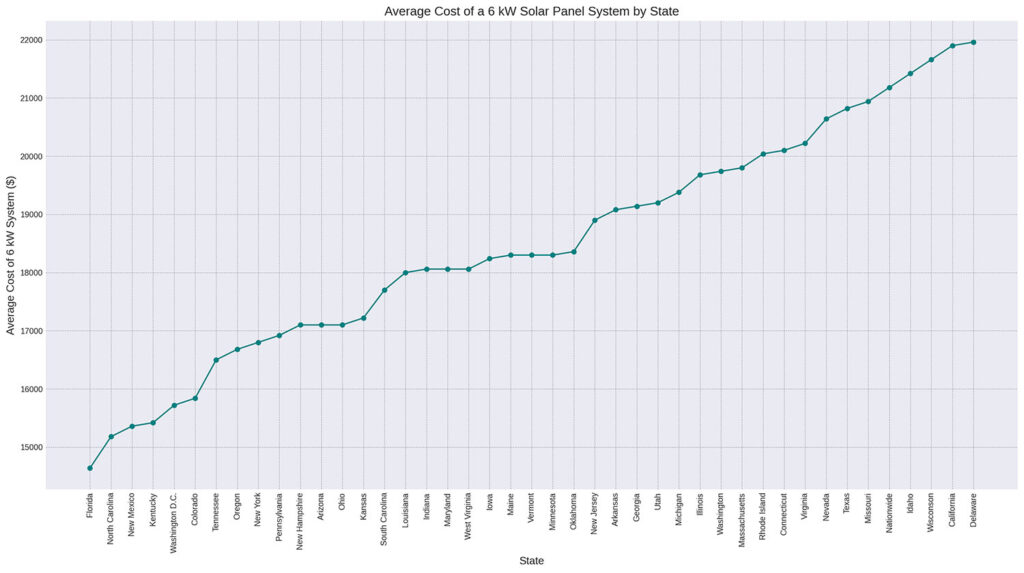
If you’re considering installing a solar panel system but are concerned about the costs, the first thing to do is research solar panel costs in your state. Average costs by state can vary significantly, both for installations and savings over time.
For example, about one-quarter of California’s energy comes from solar energy because it has invested the most money into its solar energy grid technology. However, homeowners looking to switch from electricity to solar energy may actually pay some of the highest amounts for a solar installation in California.
Meanwhile, North Dakota, South Dakota, Kansas, and Florida are among the states with some of the lowest average costs for solar panel installations, typically around the $15,000 average price point.
Solar Panel Incentives to Decrease Your Solar Panel Costs
Homeowners can look to incentives from the federal government or their state to reduce their overall solar cost. The following solar incentives give homeowners money back in their pockets as a thank-you for switching to solar energy.
Federal Solar Tax Credit
The federal government encourages homeowners to install a solar power system by rewarding them with a tax credit known as the Residential Clean Energy Credit, leading to more potential savings for solar system owners. The credit is currently equal to 30% of the price you pay for your solar installation. The federal tax credit begins to phase out in 2033 to 26% and drops to 22% in 2034. The tax credit reduces the amount of tax you owe and is non-refundable, so homeowners can’t claim more than their tax due.
To illustrate, say a homeowner spent $20,000 on a solar energy installation for their home. The federal tax credit is 30%, which equals $6,000. This homeowner can claim up to $6,000 for this tax credit. If the homeowner owes $8,000 in taxes, they can use the full $6,000 credit to reduce the amount they owe to $2,000.
Homeowners must claim the credit for the tax year in which they had their systems installed.
State Solar Tax Credits and Incentives
In addition to the federal solar tax credit, homeowners can reduce their solar panel costs with state incentives. State incentives for solar focus mostly on tax credits you can use to decrease how much you owe in taxes, similar to the federal tax credit. Each state has its own policies for crediting homeowners for installing solar, with some passing the policymaking to localities within the state.
For example, New York state allows homeowners a credit of 25% of the cost of installing their solar panel system up to $5,000. Several states also offer a property tax credit that prevents property tax from increasing if the value of a home increases after installing a solar panel system. Some states, like Arizona and New Jersey, don’t place sales tax on the price of solar panels. And the city of Austin, Texas, offers residents a credit of $2,500 just for completing a course on solar education.
Other state incentives are in the form of grants, low-interest loans, and tax credits for businesses. Some states, like Ohio, also have what’s known as an energy-efficient mortgage, which allows homebuyers to borrow the cost of energy-efficient upgrades, including solar, in addition to the cost of their home.
Use the Unbound Solar database to find state-specific incentives for solar installation.
Net Metering
Net metering is an excellent way to save even more with your solar energy system by putting some money back into your pocket. If your solar panel system produces more energy than your home needs, it can be sent back to the grid to power other homes and businesses. Areas that participate in net metering may pay homeowners for their excess energy production.
Most states offer some form of net metering, with many mandating it. Others, like Texas and Idaho, allow their state utility companies to opt into net metering, allowing their customers to cash in on its benefits.
Paying for Solar Panel Installation
Solar panel installation can be pricey, which is why many homeowners consider different financing options to budget for it over time instead of paying for its cost upfront.
Some solar installers offer financing through their company, so it’s worth asking your solar installer if this is an option. Be sure to consider the terms, like the financing length and interest rate, to ensure that it makes financial sense for you in the long run. Some companies also offer a solar lease, which can make the system more affordable right now but it usually doesn’t pay off over time. Because you won’t own the system, you’ll need to make continuous payments for it and won’t qualify for solar tax credit options for homeowners.
You could also look for a solar loan to pay for your system over time. Solar loans typically have interest rates and terms similar to personal loans, offering plenty of cash to cover the average solar panel installation for qualified borrowers.
Common Questions About Solar Savings
How much can solar panels save?
Installing solar panels can lead to significant savings on energy bills. On average, a homeowner in the United States can save about $1,785 per year, which is nearly $150 per month. This calculation is based on the average electricity cost and typical household electricity usage.
How does solar energy compare to traditional energy sources?
Solar energy, unlike traditional energy sources like gas and coal, is renewable and considered eco-friendly. It harnesses energy from the sun and converts it to power homes. However, its reliability can be less consistent than fossil fuels, as it depends on sunlight availability.
What factors affect solar panel savings?
The amount saved by using solar panels depends on several factors, including the installation size, typical electric costs, and the electricity rates in your area. Additionally, the efficiency and quality of the solar panel system can significantly influence savings.
How much can you save per month and year with solar panels?
The average monthly saving from solar panels is around $150, equating to annual savings of approximately $1,785. These savings can vary depending on the individual's energy usage and the efficiency of their solar panel system.
What should you consider when installing solar panels?
When installing solar panels, consider the quality of the system, the potential degradation over time, and the size of the system needed to meet your electricity needs. Higher quality panels may offer longer lifespan and better efficiency.
When can you expect savings from solar panels?
Savings from solar panels can be noticed almost immediately after installation, typically within the first few months. However, the return on investment considering the installation cost might take several years.
What are the typical costs of solar panel installation?
The cost for solar panel installation varies, but it typically ranges between $15,000 and $25,000. Factors influencing the cost include home size, equipment quality, and specific system upgrades.
How do incentives reduce solar panel costs?
Incentives like the federal solar tax credit and various state incentives can help reduce the overall cost of solar panel installation. These incentives can offer significant tax credits and other financial benefits.
Is solar energy a cost-effective solution for homeowners?
For most homeowners, solar energy can be a cost-effective solution, leading to reduced electricity bills. However, the extent of savings depends on individual circumstances, including energy usage, installation costs, and available incentives.
Will a Solar Panel System Help You Save Money?

The short answer to this is most likely. However, some homeowners may not experience the amount of savings they were hoping for by installing a solar panel system.
When deciding whether going solar is right for you, take some time to calculate what you currently spend on energy and how much installing solar panels costs in your area. Factor in any incentives your state offers to decrease your price. Then, research the best solar companies in your area to get quotes. Be sure to ask if they have any incentives or rebates they offer customers for solar installations.
After making these calculations, you can get a better idea of what you can expect to spend on your solar installation and how long it might take you to start seeing a return on your investment. Just remember that once your solar energy system begins producing regular energy for your home, you’ll begin seeing savings via a reduced electricity bill. Those continued savings, coupled with the federal tax credit, could make your solar installation worth the investment.



